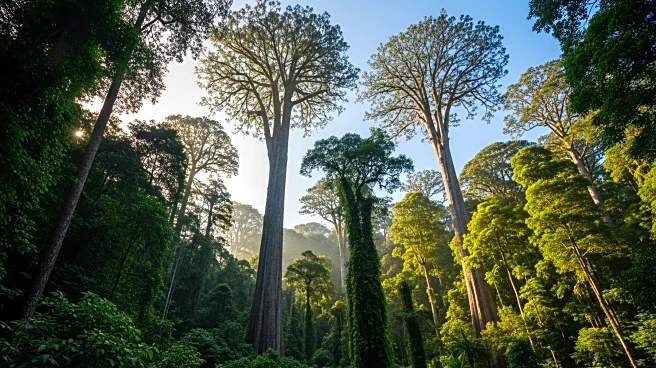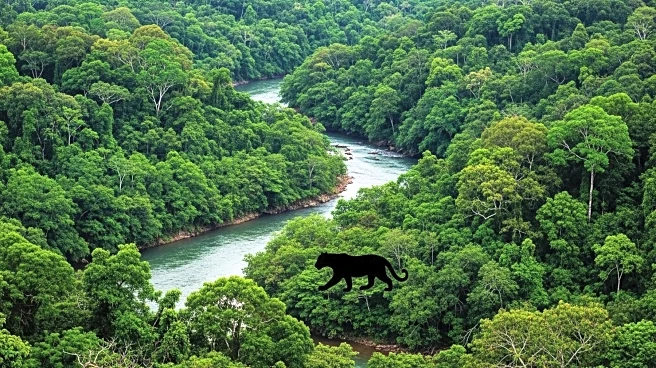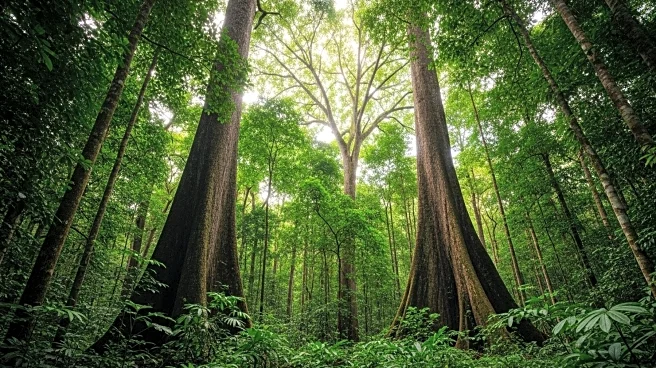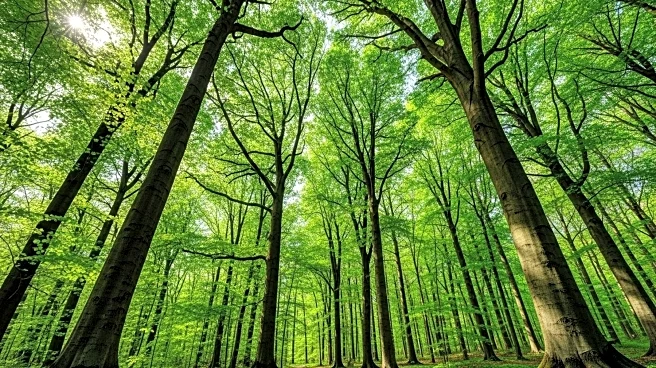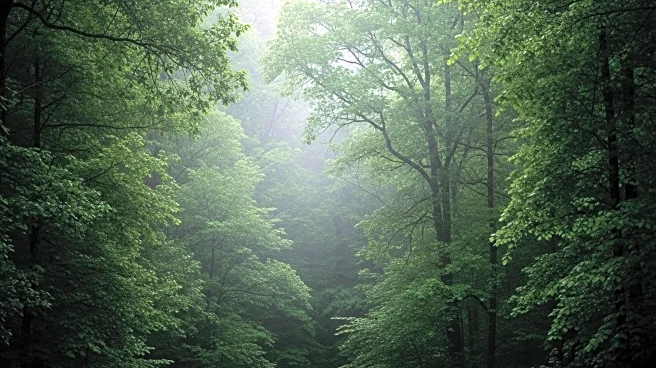What's Happening?
A recent study published in Nature Plants reveals that the largest trees in the Amazon rainforest are growing larger and more numerous, demonstrating greater climate resilience than previously believed. Conducted by nearly 100 researchers from 60 universities, the study examined changes in the forest over 30 years, finding that intact tropical vegetation continues to act as an effective carbon sink despite rising temperatures and droughts. However, the study warns that this resilience is threatened by fires, fragmentation, and land clearance due to infrastructure expansion and agribusiness. The findings highlight the importance of preserving mature forests to maintain their role in carbon sequestration.
Why It's Important?
The study's findings are significant for global climate efforts, as they underscore the critical role of mature forests in carbon sequestration. The Amazon rainforest, often referred to as the 'lungs of the Earth,' plays a vital role in absorbing carbon dioxide and mitigating climate change. The resilience of big trees offers hope for maintaining this function, but ongoing deforestation and land use changes pose a threat. Protecting these forests is essential for stabilizing the climate and preserving biodiversity, making it a priority for environmental policy and conservation efforts.
What's Next?
The study calls for urgent action to prevent further deforestation and fragmentation of the Amazon rainforest. Brazil's plans to pave roads through the forest and Bolivia's tree clearing for agriculture highlight the need for international cooperation and policy interventions. Conservation groups and governments may increase efforts to protect these areas, potentially leading to stricter regulations and enforcement. The study also suggests further research into the long-term impacts of climate change on forest ecosystems and the development of strategies to enhance their resilience.

